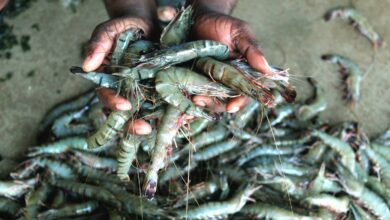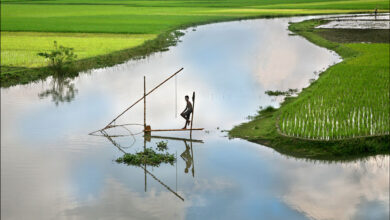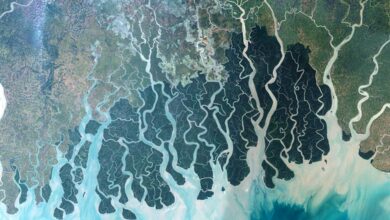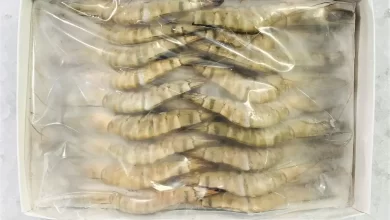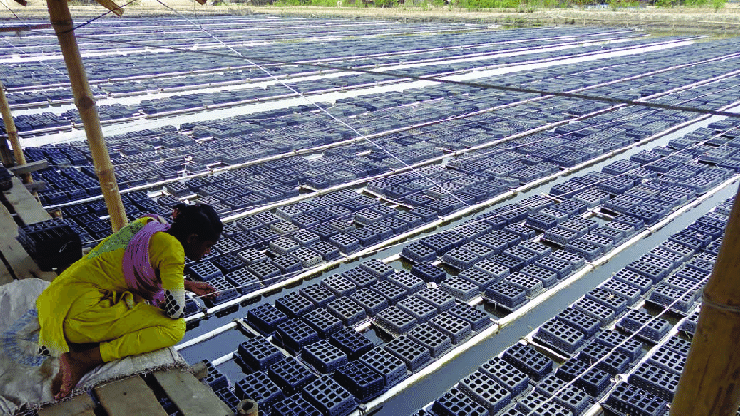
‘Tapu soft shell crab Farm’ owned by Sudhanshu Shekhar Mondal in Fultala village of North Bedkashi Union of Koyra Upazila in Khulna, Bangladesh. It is not like other traditional Mud crab (Scylla serrata) fattening farms. The farm produces about 25,000 kg of soft shell crabs annually. All of which are exported to various countries around the world through the exporting factories. On this farm, crabs are cultured using specialized plastic boxes. There are 12,000 boxed crabs within the enclosure of just 2 bighas or equivalent to 124 decimals of lands.
In Satkhira, soft shell crab farming has started from 2015 in a scattered way and now it’s a principle source of income for many people in that zone. Sudhanshu Shekhar Mandal once went to the Gharilal area of Satkhira a few years ago and saw crab farming there. He then got motivated and planned to farm soft shell crabs in the same fashion. Mr. Mandal is the first person to start farming soft shell crab at Koyra upazila under Khulna district. In 2021, he leased two bighas of land for 18 thousand taka per year and started experimental crab farming. At that time there were only three thousand crabs in plastic boxes. That year he successfully cultivated 13,000 crabs in boxes. Last year 9 thousand kg of crab was produced. However, he expects that 25 thousand kg of crab will be produced this time.
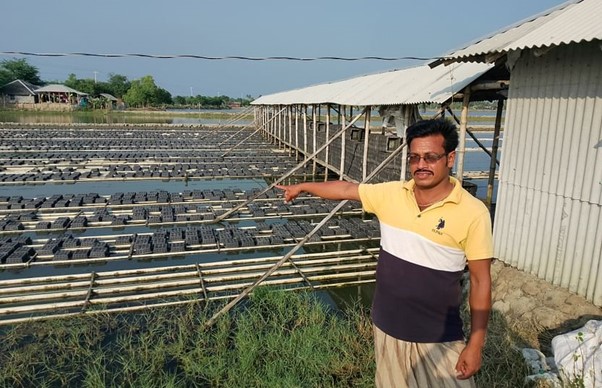
This type of crab farming is quite simple. This method requires hundreds of plastic boxes floating in the water. Each box contains crabs (Scylla serrata). A crab of average size is put in the plastic box and placed on the surface of the water. While packing the crabs into the box, sometimes the smaller legs are removed, leaving only the two claws. It makes the crabs molt faster. Once they molt, the outer shell remains, that’s why it is called the “Soft Shell Crab”. Though within an hour or half, the outer shell grows hard again. These soft shell crabs are quite a seafood delicacy for many countries in the world.
There are frequent inspections of the plastic containers by the staff. They check whether any of the crabs have molted or not. Every 3-4 hours they check on the crab boxes. If they find a dead crab in a box, pick it up and bury it under the ground. Tilapia fish pieces weighing 5 to 8 grams are given to each box as food for the crabs every four days. Narayan Barman and Madhav Mondal, workers of his crab farm, said “we dug the enclosure five-six feet deep for crab farming. We do not use any type of fertilizer in the enclosure”.
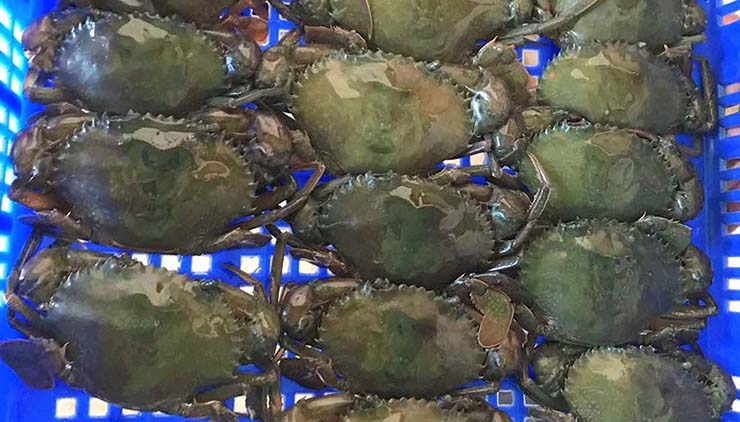
According to Sudhanshu Shekhar Mondal, once they molt, boxes are cleaned with clear water and put back into the enclosure again. More or less in 15 days crab molts. After collection of the soft shell crab, they are sold to different exporting factories from a place located near to the Burigoalini Forest Office in Satkhira. He makes roughly 5 lakh 50 thousand taka (USD 5500) selling 1000 kg of crab. In the dull season, the price of a kilogram of uncleaned soft shell crab is BDT 600-700 (USD 6-7); but, in peak season when the demand soars in foreign markets, prices can rise up to BDT 1400 – 1700 (USD 14-17) locally. Once the soft crabs are purchased, the processing factories clean and process them for export according to the buyer’s requirements. Soft shell crab season is from April to November every year. During winter, crabs don’t molt.
“Previously, there was just one box crab farming farm in Koyra, that was Tapu Soft Shell Farm,” stated by Koyra Upazila Fisheries Officer Aminul Haque. Within a year, a few more had constructed such farms. Box crab farming is a lucrative business. This approach does not waste food, and crab mortality is relatively low. Farmers can easily and rapidly open boxes and gather crabs to sell when crab prices climb.
By establishing these types of crab farms and avoiding the inherent dangers of fishing at sea or in rivers, this form of artificial farming is considered as a successful step towards making local fishing communities financially stable. This is significant since the government has taken stringent efforts to prohibit fishing at particular seasons in order to conserve stocks. The majority of crab growers reside in coastal areas, where the restriction has a significant impact on their livelihood.
The scenario is no different for Koyra upazila. Crab farming is providing locals with a fresh reason to be optimistic about an economy that had previously relied only on shrimp farming. The locals see this as a promising source for economic growth. And Sudhanshu Shekhar is the pioneer of crab farming in Koyra.
Jaber Bin Abdul Bari
Dept. of Fisheries and Marine Science, NSTU

